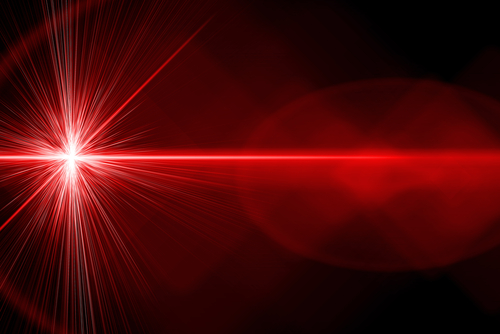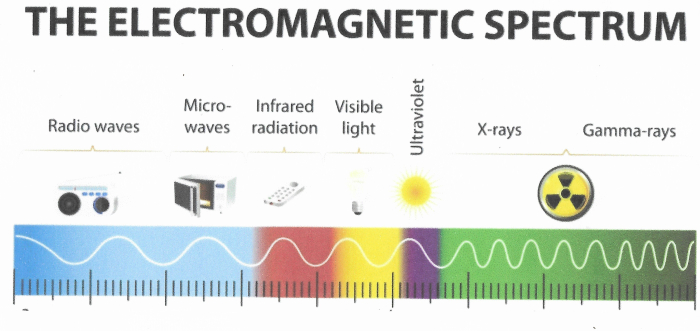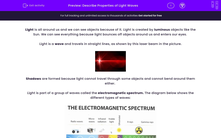Light is all around us and we can see objects because of it. Light is created by luminous objects like the Sun. We can see everything because light bounces off objects around us and enters our eyes.
Light is a wave and travels in straight lines, as shown by this laser beam in the picture.

Shadows are formed because light cannot travel through some objects and cannot bend around them either.
Light is part of a group of waves called the electromagnetic spectrum. The diagram below shows the different types of waves:

Not all waves on the electromagnetic spectrum are visible to us: visible light is made of various colours that altogether make up white light. The diagram below shows white light dispersed into its different colours by a prism:

Light travels at 300,000 km/s. It takes light 8.5 minutes to reach the Earth from the Sun.
Apart from the electromagnetic waves, there are also matter waves, like water waves and sound waves. These travel at a much lower speed. Whereas light can travel in a vacuum, i.e. a place with no particles (like empty space), matter waves need a medium, i.e. particles, to travel in. That's why light can travel in space, but sound cannot. Additionally, matter waves are not emitted by particles, but just travel in them and they have much smaller wavelengths. To understand what wavelength is, study the diagram below, showing the wavelengths of all visible light colours, which themselves travel at different wavelengths.

Let's have a go at some questions now.








